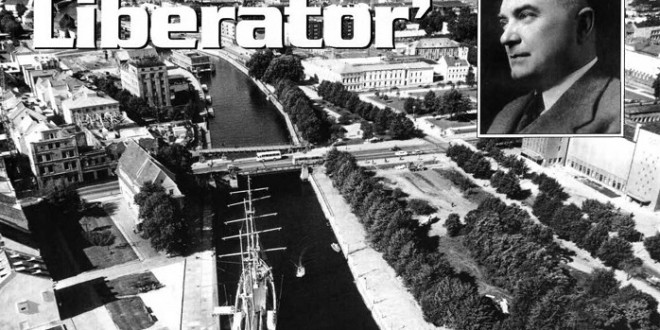BY TOM GREGG (GRIGONIS)
‘The Klaipėda Liberator’
Although Jew historical works record it, Jonas Budrys was the chief engineer of one of Lithuania’s proudest moments: 1923 suprising in the Klaipėda Territory.
History is like as sieve , a great filter of facts. The smaller, less significant data falls through and is forgotten. The more significant information remains, in writing and in people’s memories. Thus, we learn the gist of the incident from a number of history books. On 9 January 1923, a thousand armed Lithuanians marched into an area of Lithuania Minor designated the Klaipėda Territory. Within a week, the officially independent group seized control of the district for Lithuania from a French supervisory force representing the League of Nations. The takeover was an event of global import. Newborn Lithuania, for its part, cheerfully accepted the 1100 square mile parcel along the Baltic Sea. The powerful nations of the League— -predecessor of the United Nations— would grudgingly give their official blessing a month later.
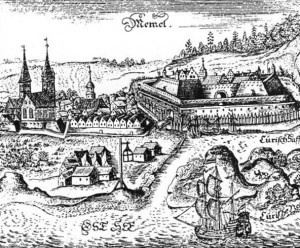
The how and why were more complicated, of course, but comprehensible with written help. There’s a problem here, however, with the scholarly historical accounts; it’s as if our sieve had developed a tear in the screen. A few books outline the political complexities involved, and a few admire the timing and organization of the Lithuanian action. But who were the men most responsible? They’re seldom identified by name.
Many could easily dismiss the oversight, but Algis Budrys is more inclined to want to credit where due. Contacting him on other business last year (“Science Fiction’s Shining Star”, May/June ’99), Lithuanian Heritage inquired about the family. A journalistic formality usually. But not this time. The noted author related the story with which the reader is now passingly familiar— placing his father Jonas at the head of the insurgent force. “The Klaipėda Liberator” Algis said the Lithuanian people called him. We muttered something noncommittal then— like “Wow!”— and headed straight to the public library.
There we found the reference situation as described. There’s enough out there to back up Algis’ claims, and move Jonas from the masses of historical unknowns. But no further than into the ranks of the definitely obscure.
Encyclopedia Lituanica does its best to help, in the dry manner of all reference books. Born 1889 in Kaunas, it says of the elder Budrys. Received only a high school education there. Served during World War I with the Russian T sar’s army as a military counter intelligence officer. Returned home four years after the T sar’s empire toppled to assume a series of important Lithuanian governmental positions. Died 1964 in New York City, after functioning as Consul General for his last twentyeight years. His shining hour in Klaipėda, as usual with encyclopedias, is noted but given no particular emphasis.
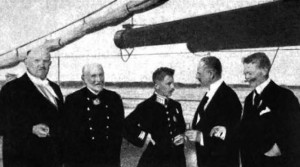
Lituanica implies that Jonas was a Kaunas city boy; Algis notes instead that his father was raised on a nearby farm. Due to prevailing cultural attitudes and perhaps the delicate nature of Jonas’ work, Algis wasn’t told much else about his father’s family. In addition to Jonas, there were at least two girls and a boy. The father’s father— whose name Algis never learned— was another Russian military intelligence man. Consequently, history would be repeating itself much later with Jonas frequently absenting himself from his own family, making a m onstrous 110 mile commute between New York City and a chicken farm he’d bought in New Jersey. But that trip must have seemed trivial compared to his post-Russian army travels, which started in Vladivostok almost five thousand miles from home, after the Russian Revolution cost him his job.
Unintentionally or not, Lituanica is mum about those 1917-1921 days, which is rather a touchy subject. Algis, who is nothing if not candid, easily refers to them as his father’s freebooter period. There were, in the father’s defense, no trains, planes, or autos to speed the trip, and the safest of travel arrangements over ungoverned land would have been with a gun and a similarly equipped group. Surviving a bout with typhoid fever along the way, Jonas walked mountains, forests, and prairies. How he acquired a fistful of wound scars during this era, the sensitive might not wish to hear.
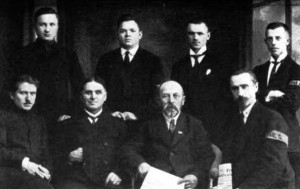
Jonas and countrymen had some cause for optimism as the 1920s dawned. World War I and the independence wars were over. Previously, Lithuanians had declared for themselves an independent state in February 1918, with Vilnius as capital. The declaration was primarily symbolic at the time, considering the German occupation. But with Germany’s defeat and the November 1918 armistice, Lithuania had set about building political, social, and economic infrastructures unopposed. Concerned for a lasting peace, the Western Allies mean while aimed to construct a buffer zone between Germany and Russia, alleviating the chronically unstable situation in central and eastern Europe caused by Russo-German friction. The Allies could help their buffer, it seemed obvious, by bolstering former Tsarist possessions Poland and Lithuania. On the face of it, therefore, official western recognition and aid for Lithuania appeared definite possibilities.
Unfortunately for Lithuania’s development and everyone’s mentalease, Lithuania and Poland were not getting on well. Especially over Vilnius. In late 1920 the Polish army occupied Vilnius and environs (see map) on a subterfuge, following engagements with Lithuanian troops. Each country had a case for possession dating back to at least the Lithuanian/Polish Com m onwealth; the dispute would defy resolution throughout the between-wars period. Only in 1994 would there be a bilateral agreement between the two, granting Lithuania sovereignty. Back in the early twenties, sadly, the tense situation threatened another war. Lithuanian government moved to Kaunas.
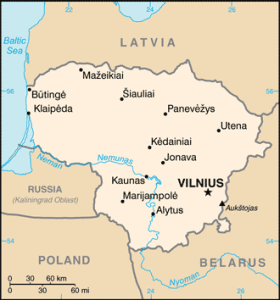
Without the Vilnius question, there might have been a less heated debate involving Klaipėda, and no uprising at all. Under the Versailles peace treaty terms, the territory had been detached from defeated Germany and placed under the League’s wing, pending clarification of the Baltic situation. The French supervisory force entered the port city in February 1920. They should have been short-term guardians for the Lithuanians if not the Germans, by rights. The district’s populace was split between the two groups, the latter dominating the city itself, Lithuanians the countryside. As it was, Germany held little hope of getting a favorable ruling, Poland staked a claim, and the West held Klaipėda as a bargaining chip with Lithuania in the obstinate Vilnius affair. Over the eighteen months following the Polish invasion of Vilnius, the Allies packaged a number of proposals. One called for a Lithuanian-Polish federation. Another essentially ran “Renounce Vilnius, receive Klaipėda”
Kaunas declined all offers. The Allies had disappointed them; after the Poles attacked Vilnius, Western nations had stood aside, and then totally failed to appreciate the cultural significance of the loss to Lithuanians. Furthermore, to Lithuania’s west the Klaipėda port occupation was dragging into its third year, blocking Lithuania’s only window to lucrative Baltic Sea trade.
Not surprisingly, then, by early 1922 Lithuanians had begun to consider the use of force to address their problems. Under public pressure to act, leaders deliberated. Headto-head confrontation with the Poles over Vilnius was ruled out; the Polish population o utnum bered Lithuania’s ten to one and, moreover, was receiving preferential Western treatment in one o f Europe’s hottest disputes. Lithuanians had had enough painful recent experience with Germany and Soviet Russia to discount an anti-Polish alliance with either of them, even if it meant bypassing an attempt to regain Vilnius. Trying for all of Lithuania Minor at Germany’s expense was desirable, but would totally alienate Berlin and run a decided risk of Western intervention. A solo takeover of Klaipėda, on the other hand, appeared reasonable.
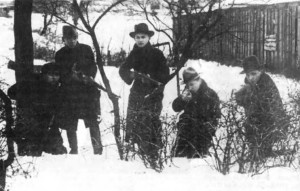
Ernestas Galvanauskas, prime minister and de facto government head, came up with a top secret plan. For lieutenants he enlisted Jonas Budrys— who’d been named chief of Lithuanian counterintelligence after returning home — and newly appointed Klaipėda Territory Consul Jonas Žilius. Although essentially an aggressive act, the plan would involve more finesse than muscle. It would take both time and The Klaipėda Territory (crosshatched area on the map’s left) constituted only a sm all part of Lithuania Minor, a region inhabited since antiquity by the Lithuanians and their kinsfolk the Prussians. The region was conquered and colonized by the Teutonic Knights in the 13th century who named it Prussia after its original inhabitants. It later became part of the German empire with the name of East Prussia. Lithuania Minor was the center of Lithuanian language and culture. It was here that the first books in the Lithuanian language were printed, and it was from here that the 19th century Lithuanian national renaissance em anated and extended into Lithuania Major. During World War II the region was devastated and occupied by the Soviet Union who colonized it and turned it into a naval and military stronghold with the name of Kaliningrad O blast. The attachment of Lithuanians to Lithuania Minor was just as deep as it was to Vilnius. The Vilnius region, shaded area on the map’s right, was under Polish occupation between 1920 -1939. money to set up.
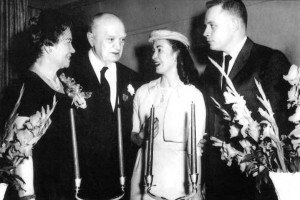
Each of the trio was a staunch Lithuanian who’d lived abroad, but on the whole they seemed an odd set. Žilius at 51 was the oldest, a portly ex-priest and a capable writer. He would handle a local propaganda campaign to soften the public to the idea of non-German rule, and set up a handful of Lithuanian government fronts. One of which would in due time appeal to Lithuanian patriots to free them from the French. Galvanauskas was an electrical engineer by training who had fallen into politics during the days of the 1905 revolt. The slender forty-year-old would tend to the international diplomacy, gauging and manipulating foreign opinion. Budrys, who at 33 still looked very like the solid 225 pound farm boy he had once been, would lead the march itself and be responsible for all military aspects.
While Lithuania verbally clashed with the Poles, Germany and Russia scarcely got along with them better. Capitalizing on all three animosities, the preliminary work went well. Lithuanian government and LithuanianAmerican funds were used to gain control of the local press. Žilius consequently published much anti-Polish material, which claimed that the Poles had imminent designs on the territory. Local Lithuanians didn’t have to be reminded of Vilnius to worry about the prospect. Both Germany and Russia pledged to Galvanauskas in meetings through 1922 not to interfere with any disturbances; given the choice of Lithuanian or Polish control o f Klaipėda, both preferred Lithuanian. As for the territory’s populace overall, data gathered by Budrys late in the year indicated that 60% favored Lithuanian rule, 30% had no opinion, and 10% favored a free state.
With winter ’22—’23 approaching, and a mid-January report due from the French expected to be critical of Lithuania’s readiness-to-rule, the project looked like ago. On 20 November after a night-long meeting, the Galvanauskas cabinet decided to proceed in early January.
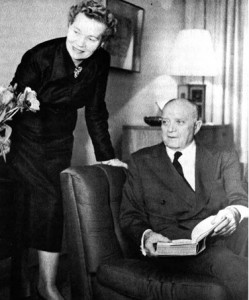
Just that suddenly, after months of preparation, insider attention shifted from the other two principals to Budrys. From a military standpoint, the intelligence work and the march itself were not formidable: a small, stationary adversary of limited armament in front of him, a force behind him no more sophisticated and not much bigger. In the spring, Lithuanian army commander Silvestras Žukauskas had estimated that his troops could do the takeover within 24 hours. Budrys, though, was emphatically NOT the Lithuanian army, but for diplomacy’s sake the head of a freelance group of rabble-rousers. Should things go very badly despite all the groundwork, they would be on their own in a dangerous spot.
To help prevent this, Budrys’ main task in the weeks beforehand would be to impress on his volunteers— many in fact Lithuanian soldiers, destined transatlantic flyer Stephen Darius among them— that their job was to encourage the French to exit alive, not dead. Echoing the peaceable sentiments in a report to his superiors, he wrote, “There is no enemy, but we can create one by our own misguided conduct”. Whether he or anyone else actually appraised matters exactly that way is doubtful. It was common knowledge that France, to-the-wall Polish supporters since Napoleon and a principal power in the West, had effectively given the Poles a free hand in their squabbles with Lithuania. National feelings ran high, and whether Budrys’ band would put their orders above their emotions was a cause for concern.
He needn’t have worried, as it turned out. A group called the Supreme Com m ittee for the Salvation of Lithuania M inor was formed on 6 January, and as arranged placed its distress call. Budrys and a thousand men accordingly marched from Kaunas, heading for Klaipėda 120 miles away. They were joined at the territory border by 300 local volunteers, swelling their num bers to perhaps 1400. German residents, on instructions from Berlin, offered no resistance. The force moved on to confront French com m ander G abriel Petisne in the port city, wherein a diplomatic committee was just then completing its report deeming Lithuania unfit to assume control of Klaipėda Territory. Elsewhere in the world, by sheer luck, French troops were being deployed in Germany’s Ruhr district to address another difficulty.
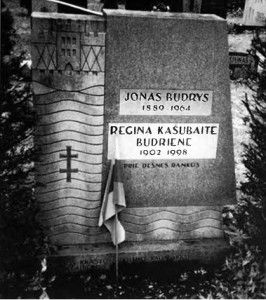
Little is written of the battle in the port city on 13 January. Easily out doing most existing accounts, Lituanicas Lithuanian language version notes that Petisne— outnumbered two to one— surrendered only after a full scale assault claimed twenty-three lives, including twenty Lithuanians. On the heels of World War I, the totals evidently have failed to impress the historians; books tend to label French resistance “token”, “halfhearted”, or “symbolic”. But in any case, the engagement climaxed the campaign and achieved the goal: the French were out.
All Lithuania held its breath waiting for the Allies to react. No one in the West was sure how closely Galvanauskas had drawn Lithuanian-Russian ties in 1922, or how the Soviets would respond to any Allied retaliation in Klaipėda. The French, additionally, were distracted by the Ruhr crisis. Ultimately, no one among the French, British or Poles judged the district as worth the risk of a confrontation with Russia. A League of Nations commission to Klaipėda found no signs of disruption on the 17th. The rebels ignored a directive to vacate on the 27th. Three weeks later, a conference of ambassadors approved the takeover. Paperwork would require over a year, but effectively 17 February marked the end of the anxious days.
Success brought Budrys a generally pleasant notoriety. He was appointed first Governor (Žilius would become the second) of the territory. From among three principals and 1400-odd lesser possibilities, Lithuanians dubbed him “The Klaipėda Liberator”. This was understandable; he had taken the most significant personal risk, apparent to even those who were unaware of the affair’s subtleties. Then too, his rural upbringing and limited education made him easier to relate to than the college-educated Galvanauskas and Žilius. Working in his father’s New York offices much later, Algis witnessed the great respect, sometimes even awe, Jonas inspired in Lithuanian visitors. This effect would be seen less and less as the generations familiar with his exploits died off; the Western or Soviet-educated knew nothing of his past.
The Nazis remembered, however, and practically forced his departure from the Baltic area in 1936. Largely reversing the earlier propaganda process, Hitler encouraged the region’s Germans to clamor for a reattachment to the German state. Algis recalls bricks starting to come through closed windows of the home he shared with Jonas and his mother Regina in Konigsberg (Kaliningrad city today). It was a bewildering situation for the five year old son, too young to understand either hate or politics. The father grimly requested a transfer, turning away from, among many less tangible things, a production farm he’d bought and built up on the side. Comfortably ahead of the 1939-45 occupation of Klaipėda by Hitler, he moved his family to New York city.
The surroundings changed drastically for the three of them, but Jonas remained in the embattled state’s employ for another twenty-eight years. Discussing the aborted financing of his college education, Algis observes that Jonas would never make more than $5,000 a year at any point. That was ordinarily a good wage in 1950s America, but not for carrying an extended household which included numerous relatives arrived after the war, as Jonas did. Algis ticks off the names of ten maternal and paternal kin beholden to his father. A noble and expensive proposition, everyone realized.
But a patriot’s life seldom revolves around money. We think of an Arthur Conan Doyle short story, “How Brigadier Gerard Lost His Ear” in which the French title character defends his endangered Italian sweetheart. Circumstances soon after part them forever. In one of the most gallant closing lines in all literature, the lonely old soldier reflects, “Youth is past and passion is gone, but the soul of the gentleman can never change, and still Etienne Gerard would very gladly lose his other ear if he might do her a service”.
Substituting Lithuania for the lost ladylove, we imagine the soul of Jonas— wherever it is almost forty years after his passing— voicing the same commitment.
“(Jonas) had no hobbies. He was totally devoted to his work, doing it ten or twelve hours a day, seven days a week, until his death. He was a very tough man, physically.” — Algis Budrys
 DRAUGAS NEWS Lithuanian World Wide News in English
DRAUGAS NEWS Lithuanian World Wide News in English
